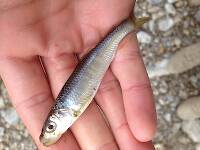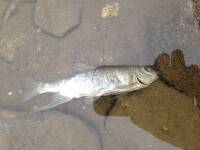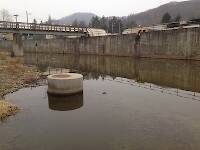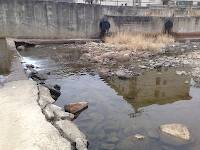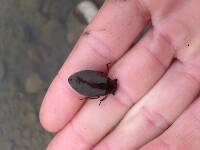
Blue-winged Olives
Baetis
Tiny Baetis mayflies are perhaps the most commonly encountered and imitated by anglers on all American trout streams due to their great abundance, widespread distribution, and trout-friendly emergence habits.
Featured on the forum

I caught this tiny larva without a case, but it seems to key pretty clearly to to Glossosomatidae. From there, the lack of sclerites on the mesonotum points to either Glossosoma or Anagapetus. Although it's difficult to see in a 2D image from the microscope, it's pretty clear in the live 3D view that the pronotum is only excised about 1/3 of its length to accommodate the forecoxa, not 2/3, which points to Glossosoma at Couplet 5 of the Key to Genera of Glossosomatidae Larvae.

Troutnut is a project started in 2003 by salmonid ecologist Jason "Troutnut" Neuswanger to help anglers and
fly tyers unabashedly embrace the entomological side of the sport. Learn more about Troutnut or
support the project for an enhanced experience here.
Troutnut on Jul 27, 2006July 27th, 2006, 3:24 pm EDT
I fish small streams quite a bit, and I almost always do poorly in the last half-hour before dark. This seems strange since that's usually the best time of day on the larger rivers I fish.
I wonder if there's something to it, and the fish become inactive earlier, or if it's just that they're harder to fish effectively without being able to see what you're doing. My guess would be the latter.
Has anyone else noticed this?
I wonder if there's something to it, and the fish become inactive earlier, or if it's just that they're harder to fish effectively without being able to see what you're doing. My guess would be the latter.
Has anyone else noticed this?
Jason Neuswanger, Ph.D.
Troutnut and salmonid ecologist
Troutnut and salmonid ecologist
Wiflyfisher on Jul 28, 2006July 28th, 2006, 9:03 am EDT
Jason, I think you have to also consider the surrounding habitat and how that might effect the fishing situation. As example, a smaller stream in the East and Midwest (ie: Long Branch, Big Brook, etc...) has much more overhead cover (trees shading the water), less sunlight and lower water temps than most larger (wider) rivers. This could definitely effect the hatch / feeding cycle.
John
John
John S.
https://WiFlyFisher.com
https://WiFlyFisher.com
Quick Reply
Related Discussions
Topic
Replies
Last Reply
Re: Salmonfly question for you westerners
In the Stonefly Species Pteronarcys californica by Troutnut
In the Stonefly Species Pteronarcys californica by Troutnut
7
Jun 4, 2016
by Chipper
by Chipper
3
Sep 24, 2012
by Entoman
by Entoman
0
May 6, 2011
by Jtberez
by Jtberez
5
Jul 15, 2012
by Jmd123
by Jmd123
1
Sep 27, 2020
by Martinlf
by Martinlf




